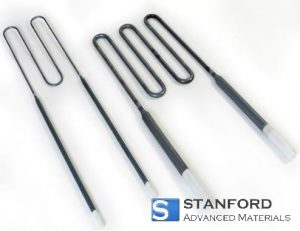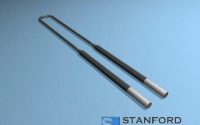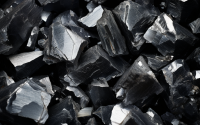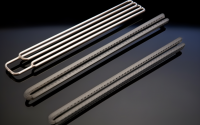Silicon Molybdenum Rod – An Overview
The silicon molybdenum rod electric heating element is based on molybdenum disilicide. It is resistant to high temperatures and oxidation and has a long service life. When used in a high-temperature oxidizing atmosphere, a bright and dense quartz (SiO2) glass film will be formed on its surface, which can protect the inner layer of the silicon molybdenum rod from oxidation.
| Silicon molybdenum rod | |
| Molecular formula | MoSi2 |
| Density | 5.5~5.6g/cm3 |
| Flexural strength | 15MPa(20℃) |
| Vickers hardness | 570kg/mm2 |
| Porosity | 7.4% |
| Water absorption | 1.2% |
| Thermal elongation | 4% |
| Emissivity | 0.7~0.8(800~2000℃) |

According to the structure, working atmosphere, and temperature of the heating equipment, the correct selection of the surface load of the electric heating element is the key to the service life of the silicon molybdenum rod electric heating element.
Silicon molybdenum rod heating element products are widely used in metallurgy, steelmaking, glass, ceramics, refractory materials, crystals, electronic components, semiconductor materials research, manufacturing, and other fields, especially for the production of high-performance precision ceramics, high-grade artificial crystals, Precision structural metal ceramics, glass fiber, optical fiber, and high-grade alloy steel.
The maximum operating temperature of the silicon molybdenum rod in an oxidizing atmosphere is 1800 ° C. The resistance of the silicon molybdenum rod electric heating element increases rapidly with the increase in temperature, and the resistance value is stable when the temperature remains unchanged. Under normal circumstances, the resistance of the element does not change with the length of use, so the old and new silicon molybdenum rod heating elements can be mixed.
Silicon in the silicon molybdenum rod is a chemical element, its chemical symbol is Si, the atomic number is 14, and the relative atomic mass is 28.09. There are two allotropes of amorphous silicon and crystalline silicon, which belong to metalloids of group IVA on the periodic table. Silicon is an extremely common element, but it rarely occurs in nature in the form of elemental substances but in the form of complex silicates or silica, which widely exists in rocks, gravel, and dust. Silicon is the eighth most abundant resource in the universe. In the Earth’s crust, silicon is the second most abundant element, making up 25.7% of the total mass of the Earth’s crust, second only to oxygen (49.4%).
For more information about molybdenum and molybdenum-related products, please visit https://www.samaterials.com/6-molybdenum.html.



